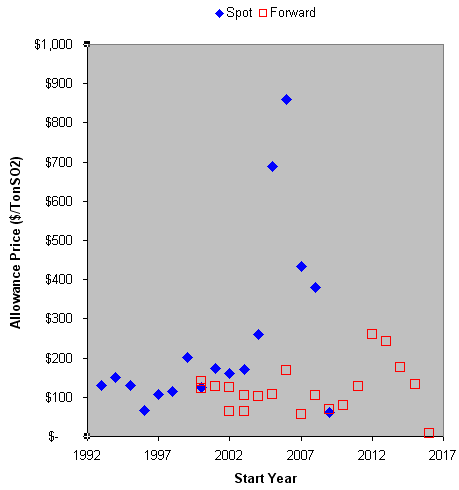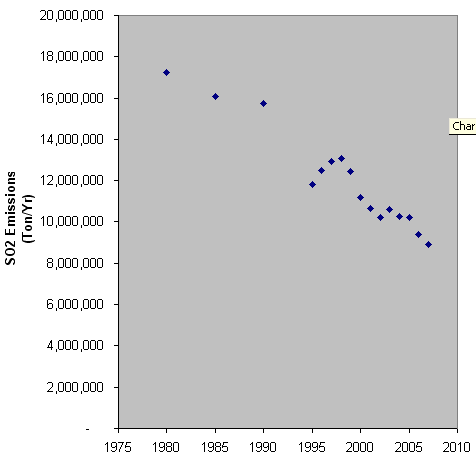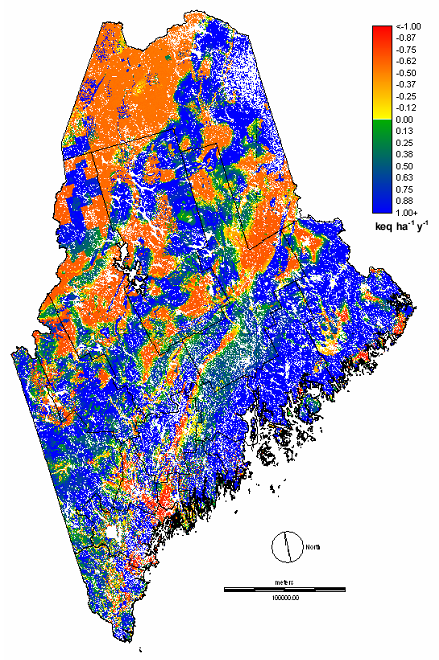I noticed a few news items on the SO2 allowance market today, following up on the latest auction. Here’s the auction history:

The spot permit price has collapsed, from a high of $860/ton in the 2006 compliance stampede, to $62. That’s not surprising, given the economic situation. What is a little surprising is that the forward price (allowances for use starting in seven years) fell to $6.63 – a tenth of the previous low, spot or forward. What’s going on there? Do plants expect a seven-year recession? Are utilities hoarding cash? Do they expect the whole market to unravel, or to become irrelevant as climate policy imposes a more tightly-binding constraint?
And here’s the corresponding historic emissions trajectory:

The acid rain allowance market is widely cited as an example of success, where trading greatly reduced compliance costs, when compared to the command-and-control alternative. What is generally overlooked is that the acid rain problem has not actually been solved.
The Title IV program and its market-based mechanisms proved to be successful beyond expectations, both in terms of actual emission reductions and in terms of the cost of making those reductions. Many people believed that with Title IV, the ‘Acid Rain’ problem was solved. Scientists did, in fact, find improvement and the beginning of recovery in some locales. For many other areas, however, the emission reductions to date have merely slowed down the rate at which the damage is occurring, and for these areas, acid deposition remains a serious problem. It is worth noting here also that the emission reductions achieved were primarily those of sulfur dioxide (SO2), while emissions of nitrogen oxide (NOx) have actually increased in some areas of the eastern United States.
Still, there is reason to be optimistic. Studies suggest that it is possible for eco-systems damaged by acid deposition to recover. The rate at which recovery occurs and the extent to which the recovery happens is dependent upon the magnitude of the reductions in sulfur dioxide (SO2) and nitrogen oxide (NOx) emissions, and the time it takes to achieve these emission reductions. For much of the northeastern U.S., it has been estimated that upwards to an 80 percent reduction in utility emissions of sulfur dioxide (SO2) (beyond those called for under Title IV) and the implementation of controls for nitrogen oxides (NOx) will be required for eco-system recovery. Even with these emission reductions, substantial eco-system recovery may not occur for another 25 years or more. (Emphasis added; Source: Maine DEP)
In other words, acid rain is another bathtub story. The key bathtub is not in the air, where acid precursors are resident for only days to weeks. The unseen, long-lived bathtubs are stocks of acids, buffers, and nutrients in soils and water. As with CO2, as long as acid emissions exceed the natural rate of uptake (or corresponding rates of rock weathering and nutrient deposition), the situation on the ground will get gradually worse and worse in many areas. In Maine, for example, deep cuts in acid deposition would need to occur to eliminate the orange areas on the map:

